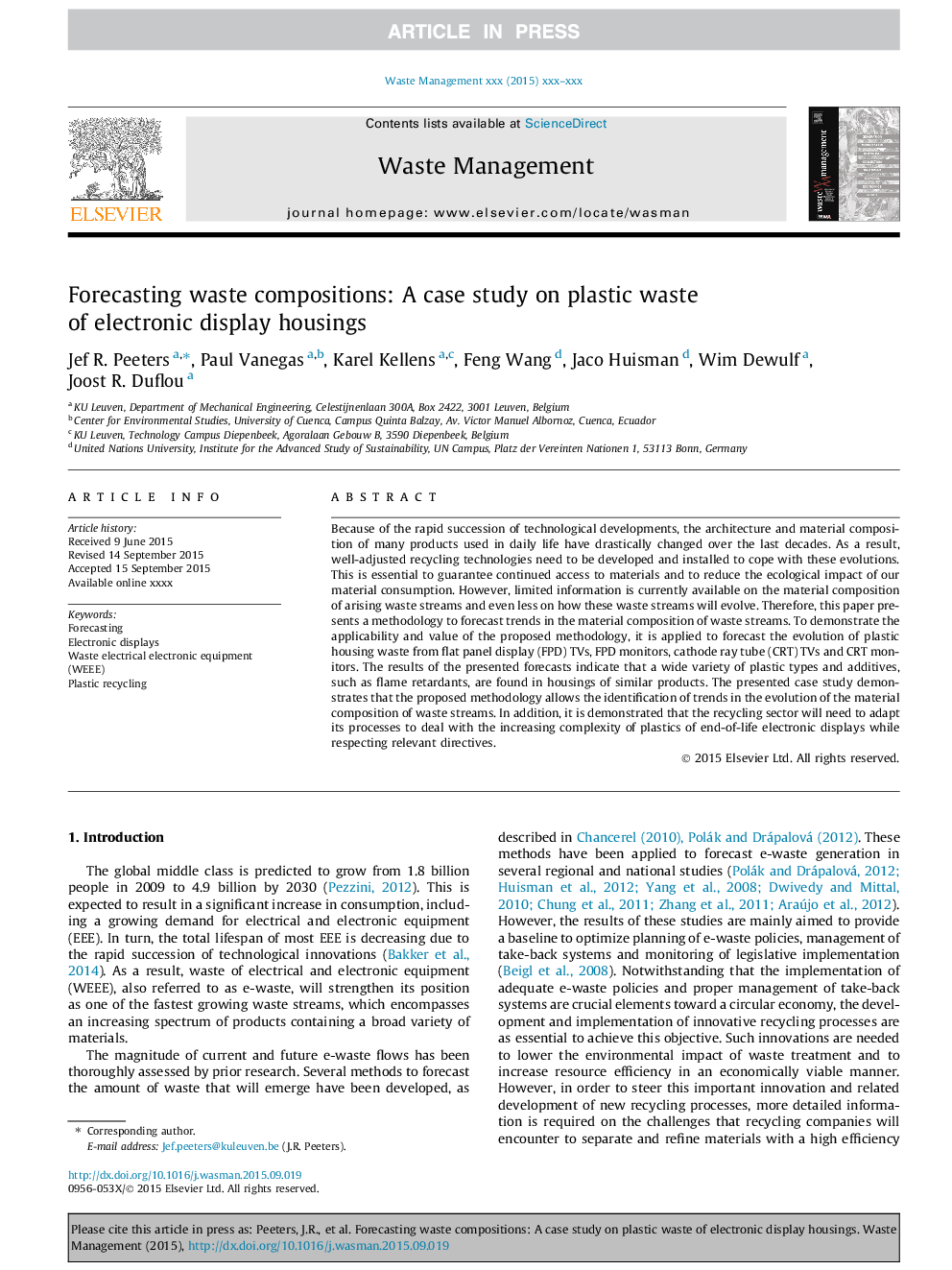| Article ID | Journal | Published Year | Pages | File Type |
|---|---|---|---|---|
| 6354407 | Waste Management | 2015 | 12 Pages |
Abstract
Because of the rapid succession of technological developments, the architecture and material composition of many products used in daily life have drastically changed over the last decades. As a result, well-adjusted recycling technologies need to be developed and installed to cope with these evolutions. This is essential to guarantee continued access to materials and to reduce the ecological impact of our material consumption. However, limited information is currently available on the material composition of arising waste streams and even less on how these waste streams will evolve. Therefore, this paper presents a methodology to forecast trends in the material composition of waste streams. To demonstrate the applicability and value of the proposed methodology, it is applied to forecast the evolution of plastic housing waste from flat panel display (FPD) TVs, FPD monitors, cathode ray tube (CRT) TVs and CRT monitors. The results of the presented forecasts indicate that a wide variety of plastic types and additives, such as flame retardants, are found in housings of similar products. The presented case study demonstrates that the proposed methodology allows the identification of trends in the evolution of the material composition of waste streams. In addition, it is demonstrated that the recycling sector will need to adapt its processes to deal with the increasing complexity of plastics of end-of-life electronic displays while respecting relevant directives.
Keywords
Related Topics
Physical Sciences and Engineering
Earth and Planetary Sciences
Geotechnical Engineering and Engineering Geology
Authors
Jef R. Peeters, Paul Vanegas, Karel Kellens, Feng Wang, Jaco Huisman, Wim Dewulf, Joost R. Duflou,
